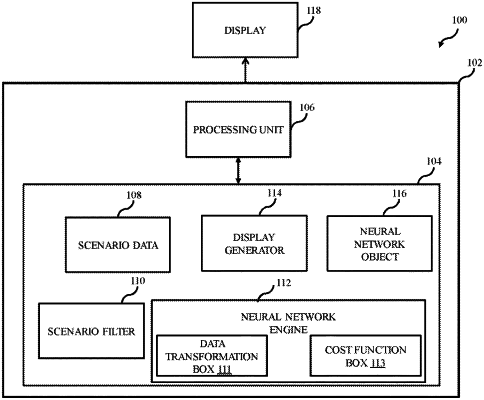| CPC G05B 23/024 (2013.01) [G05B 13/027 (2013.01); G06F 11/3495 (2013.01); G06N 3/045 (2023.01); G06N 3/08 (2013.01); G21D 3/001 (2013.01); G21D 3/04 (2013.01); G05B 2219/32335 (2013.01)] | 13 Claims |

|
1. A modular neural network system for real-time processing of data, comprising:
a plurality of graphical processors, executing stored programming codes stored in a non-transitory computer storage medium to process scenario data, wherein the programming codes are configured as:
a first processing segment and a second processing segment, each of the first and the second processing segment comprising respective plurality of processing bulks, wherein:
a first bulk of the first and the second processing segment is a front portion and a last bulk of the first and the second processing segment is a back portion,
the first bulk has a shallower data processing block depth than subsequent processing bulks, such that processing block depth increases as a flow of the scenario data increases towards the back portion;
each processing bulk of the first and the second processing segment comprises a plurality of processing blocks for processing certain micro tasks;
each processing block having a different kernel size at a same level for capturing features with different data sizes in the scenario data;
the kernels are selected from one of: a convolution kernel, a transpose convolution kernel;
such that the first segment is responsible for learning special tasks, which the learning will be used in the second segment to reconstruct a volumetric input.
|